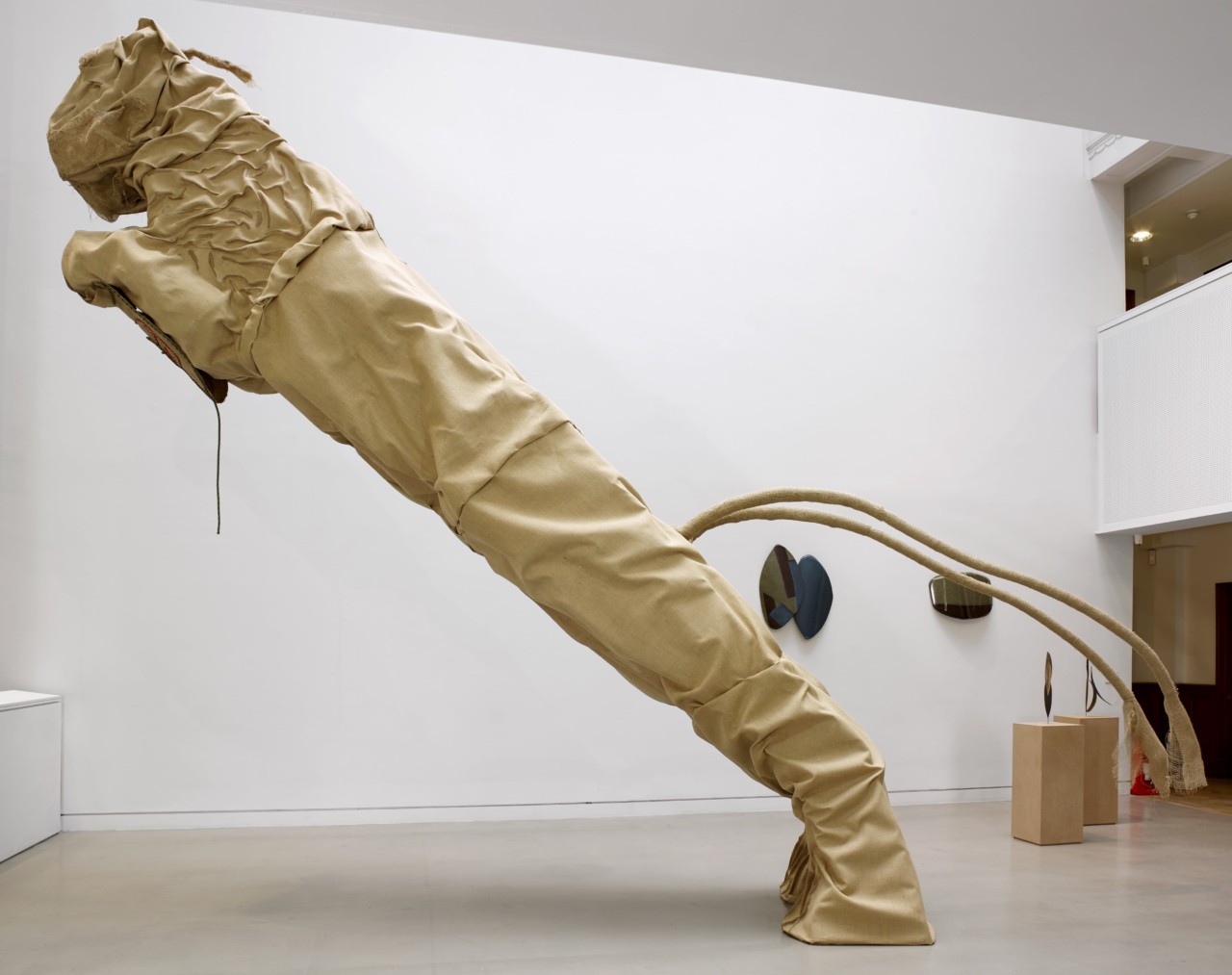


Jessie Flood-Paddock, Lion Vasa, 2017. Image courtesy of The Carl Freedman Gallery London and the artist and The Tetley, Leeds. Supported by the Henry Moore Foundation, The Elephant Trust and the Artists’ General Benevolent Institution.
My first visit to The Tetley in Leeds was to sculpture show Refinding, which pairs Jessie Flood-Paddock (b.1977) with the late Kenneth Armitage (1916-2002), known for his semi-abstract bronzes. This counter-intuitive but productive pairing, against the handsome Art Deco surroundings of the Tetley Brewery’s former headquarters, resonates in unexpected and playful ways.
As the recipient of the Kenneth Armitage Fellowship 2013-15, Flood-Paddock got to know Armitage’s practice whilst living in his old house and studio in Kensington. She considers him to be a contemporary artist rather than a modern one. The younger sculptor has selected her senior’s lesser-known Oak Tree series to show alongside her recent work here, in the city of his birth, for his recent centenary. The Tetley, newly awarded Arts Council NPO status, is operated by Project Space Leeds, founded in 2006 and inhabiting the former brewery building since 2013.
It was while living in Armitage’s house, surrounded by his books and tools, that Flood-Paddock developed her intriguing Snacks series, displayed here. Continuing her ongoing exploration of the emotional exchange value of objects, Snacks was initially sparked by the artist reading a conversation between David Lipsky and David Foster Wallace, recounted in the former’s memoir of his friend. In it, they discuss the role of snacks as a social lubricant, noting the way people gather around a bowl of nuts at a party.
Flood-Paddock has taken inspiration from Japanese peanut crackers in their lush palette of greens, oranges, whites and reds. She notes how the small black strips of seaweed applied at random intervals resemble facial features when the covered peanuts are turned on end and enlarged. Seeing in these crackers readymade works of art, she riffs on the simplicity of a Brancusi head by placing these harmoniously coloured and textured objects on plinths. Snacks 9, 12, 13 are rendered in jesmonite then covered in canvas and painted, so they play with the conventions of sculpture, painting and the genre of portraiture.
The fabric strips that bind them around the middle lengthwise and the dark ones that decorate their surfaces carry myriad, disparate associations for me. The former evoke the bandages used in the past to treat toothache or bind the heads of the dead, as sported by the ghost of Jacob Marley in Dickens’ A Christmas Carol. The black strips recall Adam Ant’s make-up, or the strokes of a censor’s pen. A group of more wrinkled heads, Snacks 16, 18, 19, 20, 21, 24 (2015), resembling punctured footballs or deflated papier maché balloons, assemble on the floor as if they are cartoon characters about to make their escape.
Flood-Paddock uses a similar economy of means in her Shields I & 2 (2013), made of the bulletproof fabric Kevlar. They are abstract but their collaged surfaces evoke faces, female anatomy or cells. She also gives this toughest of fabrics an airy lightness in her feathery Maquettes 1 & 2. The artist comments that she likes to keep an ‘exit’ in her work, an unfinished, sketch-like quality.
In Snacks Standing 1,3,4 (2013) a trio of mounted wooden objects seek to interact with visitors, like mirrors or interlocutors. Geometric, these round and rectangle faces evoke the African masks loved by modernists, or the paintings of Paul Klee. It is a human trait to see faces in the inanimate objects that surround us. The round ‘face’ is made of spalted beech, a diseased timber that suggests sun-damaged skin. Flood-Paddock plays with skin textures and minimally suggested physical characteristics again in her shield-like but sensual Jute Nude (2014). On one plinth sits a pile of casts of the artist’s own arm in blue rubber. Is this disconcerting intrusion of the real body into abstracted allusions to it a pun on the artist’s ‘hand’, and originality, or a reference to genetic inheritance?
Armitage finds the human form in the ancient oaks in Richmond Park. In his remarkable series of sculptures, drawings and prints, Oak Tree (1975 -1986), branches become arms or stunted heads and trunks become torsos. The oaks depicted in his series of small bronzes sometimes resemble totemic objects, at other times, children’s toys. Armitage also plays witness to nature’s resilience, with bronzes of blasted oak trees that continue to grow although hollow inside. Richmond Park dates back to the thirteenth century, but after Charles I introduced deer there, mature trees had to be to cut to encourage the branches to grow vertically, above deer nibbling height. The pollarded shape of the trees, resemble mushroom clouds or bonsai trees.
At the heart of the exhibition a four-and-a-half-metre tall rampant lion, Lion Vasa (2017), fills the height of the building. The lion’s monumental size is undercut by the lightweight jute he is constructed from and his almost mock-serious expression. Flood-Paddock’s lion is an enlarged model of the doomed figurehead of the Vasa, a Swedish war ship dredged up in Stockholm Harbour in 1961 and now a tourist attraction. Amazingly it had survived intact for 333 years, after sinking on its maiden voyage in 1628 due to poor design and the king’s impatience. The wood was initially preserved under fresh water as a time capsule but it is now decaying very slowly. It is this ancient oak that made up the Vasa ship, the trees of Richmond, and the gallery wall panels that subliminally bind this exhibition together.
Ali MacGilp, Ph.D.
Programmes Manager
The Tetley, Hunslet Rd, Leeds LS10 1JQ. Daily 10.00 – 17.00, Wednesdays 10.00 – 20.00. Exhibition continues until Sunday 30 July 2017. www.thetetley.org